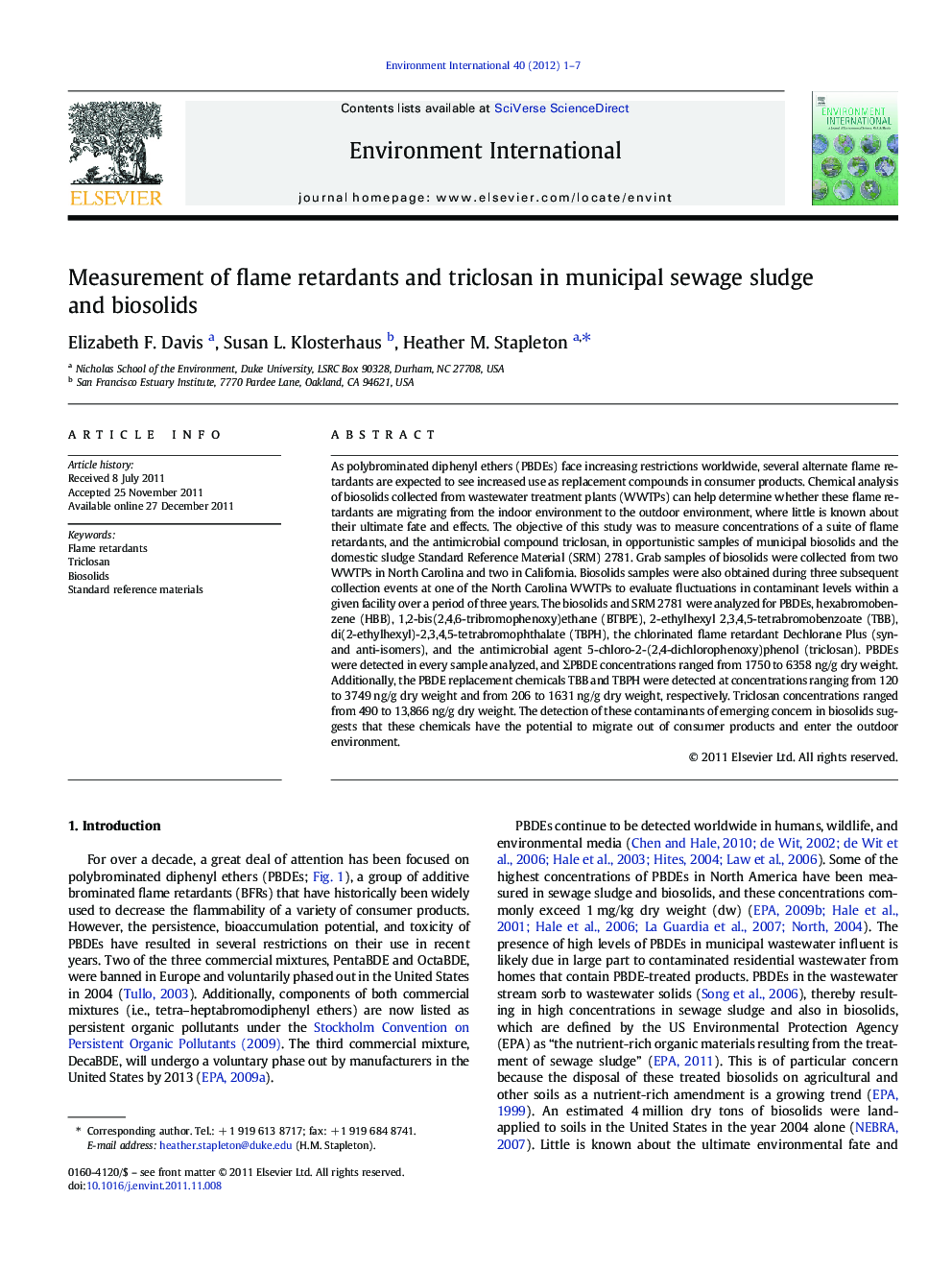| کد مقاله | کد نشریه | سال انتشار | مقاله انگلیسی | نسخه تمام متن |
|---|---|---|---|---|
| 4423093 | 1619087 | 2012 | 7 صفحه PDF | دانلود رایگان |

As polybrominated diphenyl ethers (PBDEs) face increasing restrictions worldwide, several alternate flame retardants are expected to see increased use as replacement compounds in consumer products. Chemical analysis of biosolids collected from wastewater treatment plants (WWTPs) can help determine whether these flame retardants are migrating from the indoor environment to the outdoor environment, where little is known about their ultimate fate and effects. The objective of this study was to measure concentrations of a suite of flame retardants, and the antimicrobial compound triclosan, in opportunistic samples of municipal biosolids and the domestic sludge Standard Reference Material (SRM) 2781. Grab samples of biosolids were collected from two WWTPs in North Carolina and two in California. Biosolids samples were also obtained during three subsequent collection events at one of the North Carolina WWTPs to evaluate fluctuations in contaminant levels within a given facility over a period of three years. The biosolids and SRM 2781 were analyzed for PBDEs, hexabromobenzene (HBB), 1,2-bis(2,4,6-tribromophenoxy)ethane (BTBPE), 2-ethylhexyl 2,3,4,5-tetrabromobenzoate (TBB), di(2-ethylhexyl)-2,3,4,5-tetrabromophthalate (TBPH), the chlorinated flame retardant Dechlorane Plus (syn- and anti-isomers), and the antimicrobial agent 5-chloro-2-(2,4-dichlorophenoxy)phenol (triclosan). PBDEs were detected in every sample analyzed, and ΣPBDE concentrations ranged from 1750 to 6358 ng/g dry weight. Additionally, the PBDE replacement chemicals TBB and TBPH were detected at concentrations ranging from 120 to 3749 ng/g dry weight and from 206 to 1631 ng/g dry weight, respectively. Triclosan concentrations ranged from 490 to 13,866 ng/g dry weight. The detection of these contaminants of emerging concern in biosolids suggests that these chemicals have the potential to migrate out of consumer products and enter the outdoor environment.
► We report on levels of flame retardants and triclosan in biosolids collected from two states, one on each coast of the U.S.
► We examine changes in concentrations over a limited time period in one wastewater treatment facility.
► PBDEs, several alternate flame retardants, and triclosan were detected in biosolids at elevated concentrations.
► We also report the first measurements of flame retardant and triclosan levels in a sludge Standard Reference Material.
► Our combined data suggest that these chemicals are migrating from consumer products to the outdoor environment.
Journal: Environment International - Volume 40, April 2012, Pages 1–7